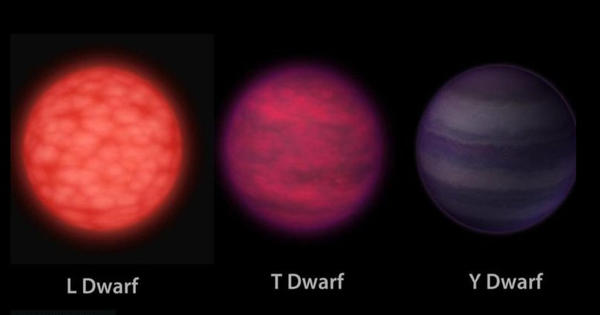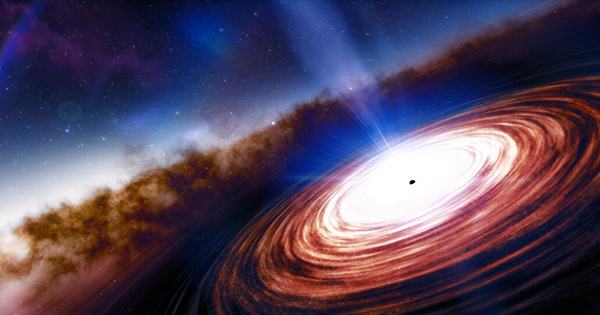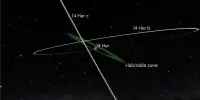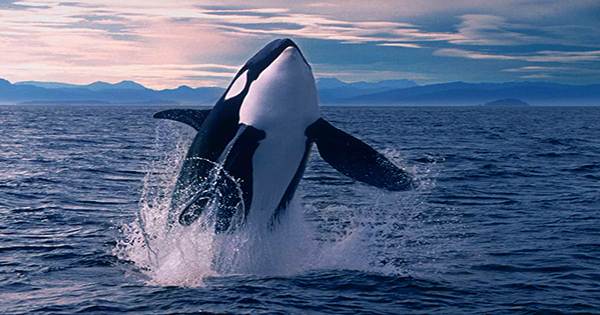A brilliant, ruby-red, twinkling spot of light can be seen in the upper right shoulder of the winter constellation Orion the Hunter, often known as Betelgeuse or Alpha Orionis. Its name is derived from the Arabic phrase “the giant’s shoulder,” or bat al-jawzāʾ. It is a variable star that is typically about 0.6 in apparent magnitude.
One of the night sky’s brightest stars is Betelgeuse. Its surface would extend beyond the asteroid belt and engulf the orbits of Mercury, Venus, Earth, and Mars if it were at the center of our solar system. Astronomers, however, recognise it as a seething monster with a 400-day-long heartbeat of regular pulsations when they look at it closely.
This old star is a supergiant because of its astounding expansion to a diameter of almost 1 billion miles. It would extend to Jupiter’s orbit if it were positioned at the center of our solar system. The star will eventually undergo a supernova explosion. When that eventually occurs, it will be momentarily observable from Earth in the midday sky. But before the big explosion, there are many of fireworks happening right now.
Astronomers using Hubble and other telescopes have deduced that the star blew off a huge piece of its visible surface in 2019.
This has never been observed on a star before. Mass ejections of the corona, our Sun’s outer atmosphere, occur often. However, compared to what was observed on Betelgeuse, those events are orders of magnitude weaker.
The star strangely darkened in late 2019, which provided the first hint. The ejected surface cooled and a huge cloud of obscuring dust developed. Now, astronomers have put together a possible explanation for the disruption. Additionally, the star is still regaining strength slowly, and the photosphere is regenerating.
The star’s regular cycle is being disturbed, and the inside is resonating like a bell that has been struck with a sledgehammer. This doesn’t mean the monster star is going to explode any time soon, but the late-life convulsions may continue to amaze astronomers.
Analyzing data from NASA’s Hubble Space Telescope and several other observatories, astronomers have concluded that the bright red supergiant star Betelgeuse quite literally blew its top in 2019, losing a substantial part of its visible surface and producing a gigantic Surface Mass Ejection (SME). This is something never before seen in a normal star’s behavior.
We’ve never before seen a huge mass ejection of the surface of a star. We are left with something going on that we don’t completely understand. It’s a totally new phenomenon that we can observe directly and resolve surface details with Hubble. We’re watching stellar evolution in real time.
Our Sun routinely blows off parts of its tenuous outer atmosphere, the corona, in an event known as a Coronal Mass Ejection (CME). But the Betelgeuse SME blasted off 400 billion times as much mass as a typical CME!
The monster star is still slowly recovering from this catastrophic upheaval. “Betelgeuse continues doing some very unusual things right now; the interior is sort of bouncing,” said Andrea Dupree of the Center for Astrophysics | Harvard & Smithsonian in Cambridge, Massachusetts.
These new discoveries provide information on how red stars lose mass toward the end of their lives when their nuclear fusion furnaces exhaust, leading to their eventual explosion as supernovae. Their fate is highly impacted by the degree of mass loss.
Betelgeuse’s unusually obnoxious conduct is hardly a sign that the star is poised to go viral any time soon, either. Therefore, a large-scale loss event is not always an indication of an impending explosion.
Dupree is now pulling together all the puzzle pieces of the star’s petulant behavior before, after, and during the eruption into a coherent story of a never-before-seen titanic convulsion in an aging star.
This includes new spectroscopic and imaging data from the STELLA robotic observatory, the Fred L. Whipple Observatory’s Tillinghast Reflector Echelle Spectrograph (TRES), NASA’s Solar Terrestrial Relations Observatory spacecraft (STEREO-A), NASA’s Hubble Space Telescope, and the American Association of Variable Star Observers (AAVSO). Dupree emphasizes that the Hubble data was pivotal to helping sort out the mystery.
“We’ve never before seen a huge mass ejection of the surface of a star. We are left with something going on that we don’t completely understand. It’s a totally new phenomenon that we can observe directly and resolve surface details with Hubble. We’re watching stellar evolution in real time.”
A convective plume that was more than a million miles across and was boiling up from the star’s interior may have been the origin of the colossal outburst in 2019. The cooling portion of the photosphere was blasted off by shocks and pulsations, leaving the star with a sizable cold surface area beneath the dust cloud it had created.
Betelgeuse is now struggling to recover from this injury. Weighing roughly several times as much as our Moon, the fractured piece of photosphere sped off into space and cooled to form a dust cloud that blocked light from the star as seen by Earth observers.
The dimming, which began in late 2019 and lasted for a few months, was easily noticeable even by backyard observers watching the star change brightness. One of the brightest stars in the sky, Betelgeuse is easily found in the right shoulder of the constellation Orion.
Even more fantastic, the supergiant’s 400-day pulsation rate is now gone, perhaps at least temporarily. For almost 200 years astronomers have measured this rhythm as evident in changes in Betelgeuse’s brightness variations and surface motions. Its disruption attests to the ferocity of the blowout.
The star’s interior convection cells, which drive the regular pulsation may be sloshing around like an imbalanced washing machine tub, Dupree suggests. TRES and Hubble spectra imply that the outer layers may be back to normal, but the surface is still bouncing like a plate of gelatin dessert as the photosphere rebuilds itself.
Astronomers have never seen such a significant portion of a star’s visible surface get blown into space, despite the fact that our Sun occasionally experiences coronal mass ejections that blast off small chunks of its outer atmosphere. As a result, coronal mass ejections and surface mass ejections can occur at separate times.
Betelgeuse has grown to such a size that if it were to take the place of the Sun as the primary star of our solar system, its surface would stretch beyond Jupiter’s orbit. In 1996, Dupree utilized Hubble to distinguish between hot patches on the star’s surface. This was the first direct image of a star other than the Sun.
NASA’s Webb Space Telescope may be able to detect the ejected material in infrared light as it continues moving away from the star.
















